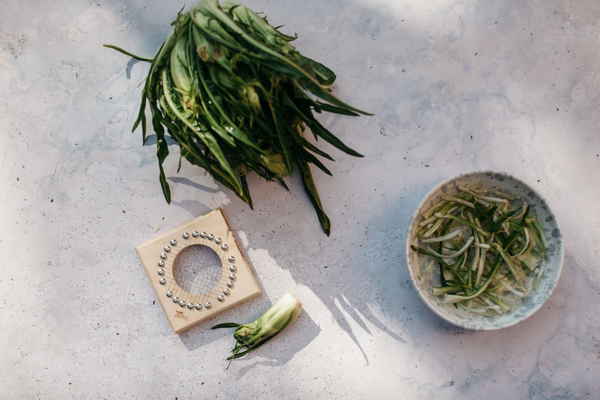Emiko Davies selects her favorite kitchen tools, and what they say to her
By Emiko Davies
Translation by Emiko Anayama
This article is part of our Issue 1: The Languages of Food publication.
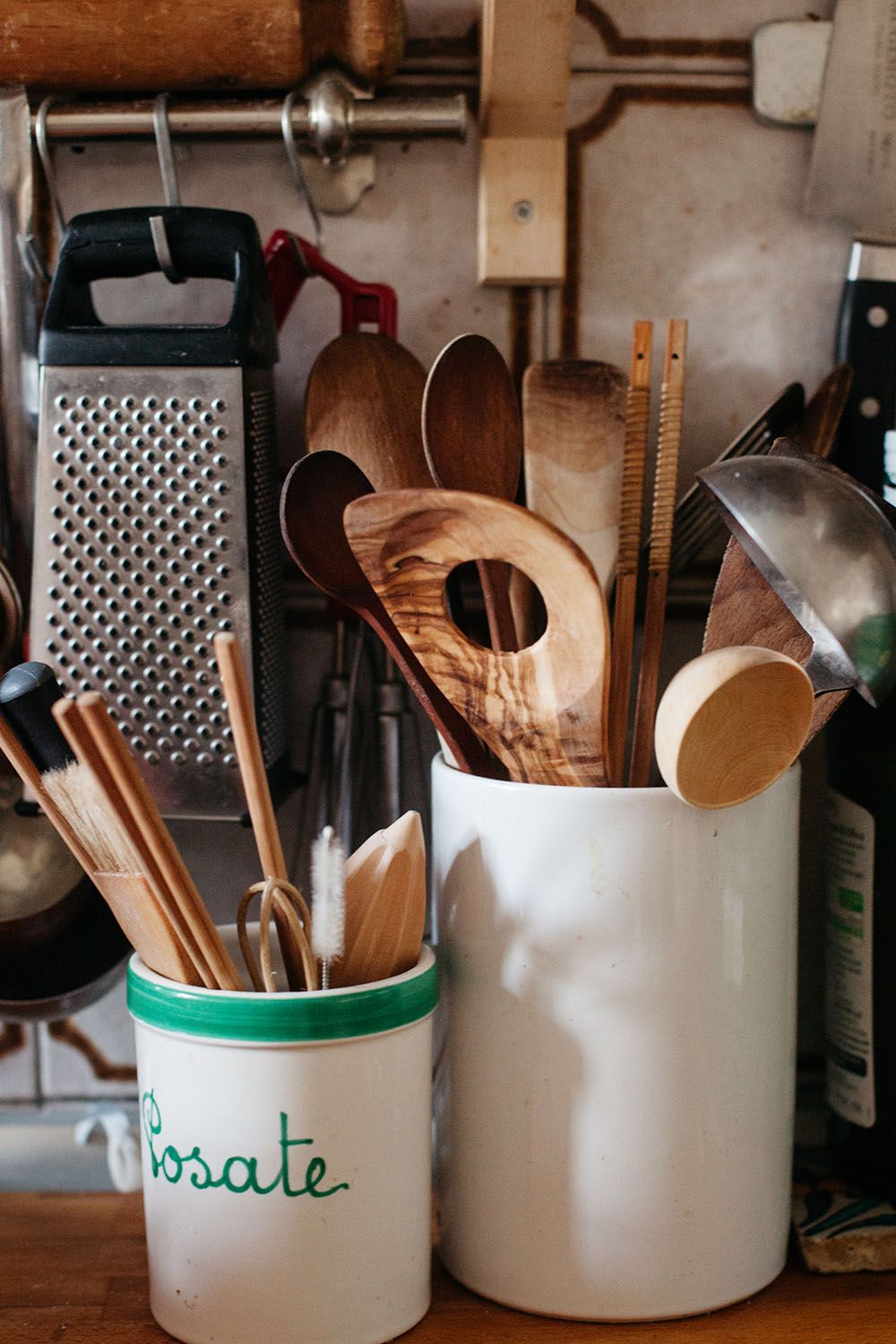
Although I call Italy home now, I have moved back and forth across continents and countries – Australia, China, the US – for as long as I can remember, and any important kitchen equipment I have accumulated over the years is in a box on the other side of the world. Because my current kitchen is as tiny as a room can get, I keep handy the tools I use every day: my knives, wooden spoons, a pair of extra-long chopsticks inherited from my Japanese mother, a couple of heirloom-worthy pans; some non-essential things that only make an appearance a few times a year – a truffle grater, metal tubes for making cannoli; and my favorite tools. Each one has a different history and purpose and speaks to me in a different way.
Puntarelle Cutter
“From Rome, with love.”
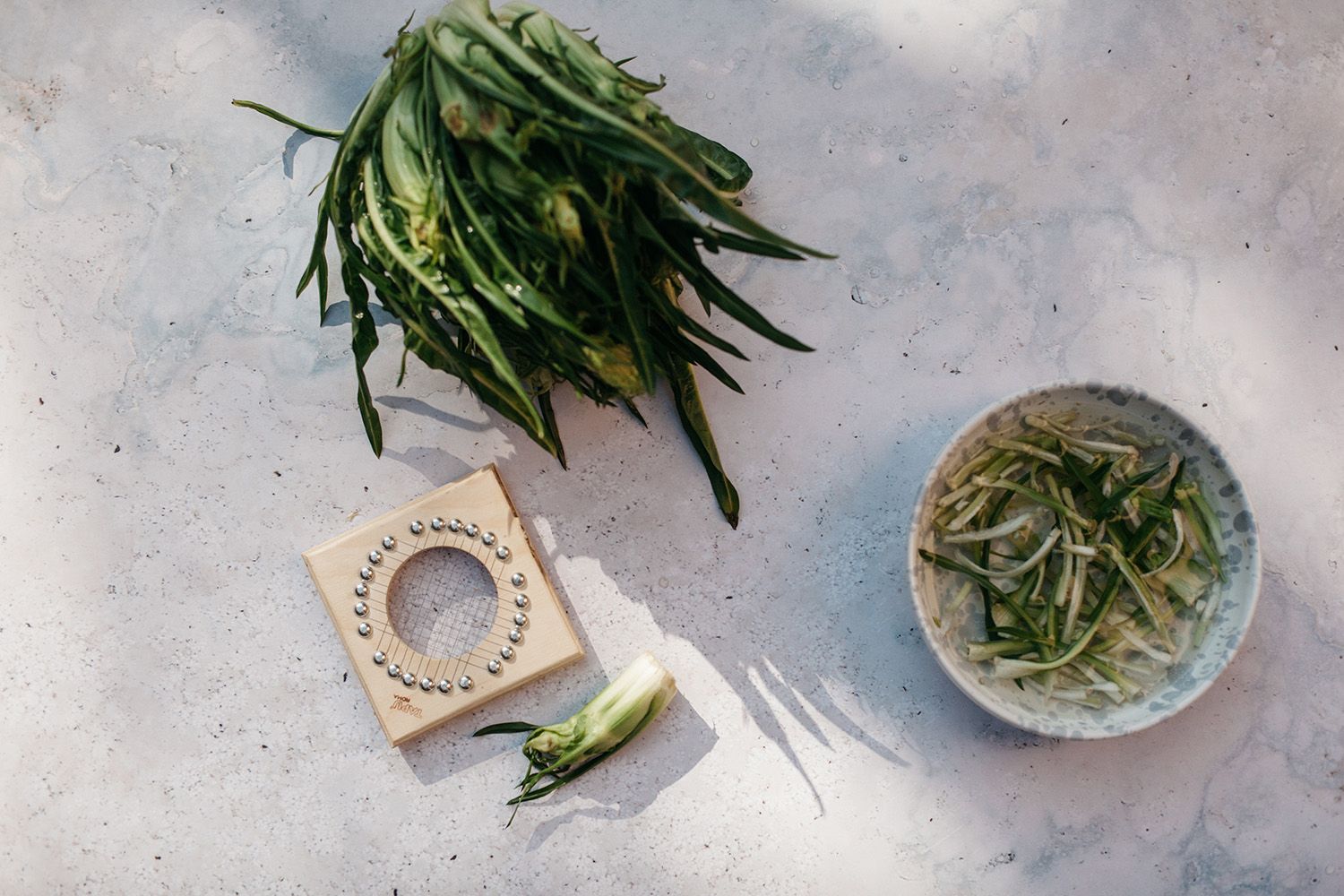
Although I would never consider a garlic crusher a useful kitchen utensil when you could just use a knife or even a microplane, somehow the Roman puntarelle cutter has always appealed to me. This is a wonderful artisanal contraption that was given to me by a friend who lives in Rome. Known as a tagliapuntarelle in Italian, it consists of a small wooden frame with a round hole in the centre, over which is a criss-cross of thin, sharp wire, made especially for a beloved Roman winter salad, puntarelle alla romana. You push puntarelle – the young, fat shoots of chicory – through the wire to make thin, even strips that are then chilled in ice cold water to curl and get wonderfully crunchy. They're served with a punchy dressing of anchovies, garlic, olive oil and vinegar. You could, of course, cut the puntarelle with a knife, but it’s nowhere near as much fun.
Artichoke Knife
“Focus on doing one thing well.”

I have been collecting handmade knives from a young Florentine artisan, Fabio Figus, for a while now – they are my favorite, most essential kitchen utensils. For my birthday last year, my husband Marco bought me a whole knife set made by Fabio, complete with a leather knife roll. The handles are made out of walnut wood with brass details, classic and vintage-looking, but incredibly sharp. Amongst the collection is a small knife with a curved blade that Marco asked Fabio to make specially for the set – it is for precisely trimming artichokes. That may sound like a very limited thing to do with such a beautiful handmade knife, but when you eat as many artichokes as we do – all winter and all spring long, raw in salad, braised, stuffed, deep-fried or chopped into a pasta sauce or frittata – it's certainly well used.
Wooden spoon with a hole
“Simplicity is smart.”
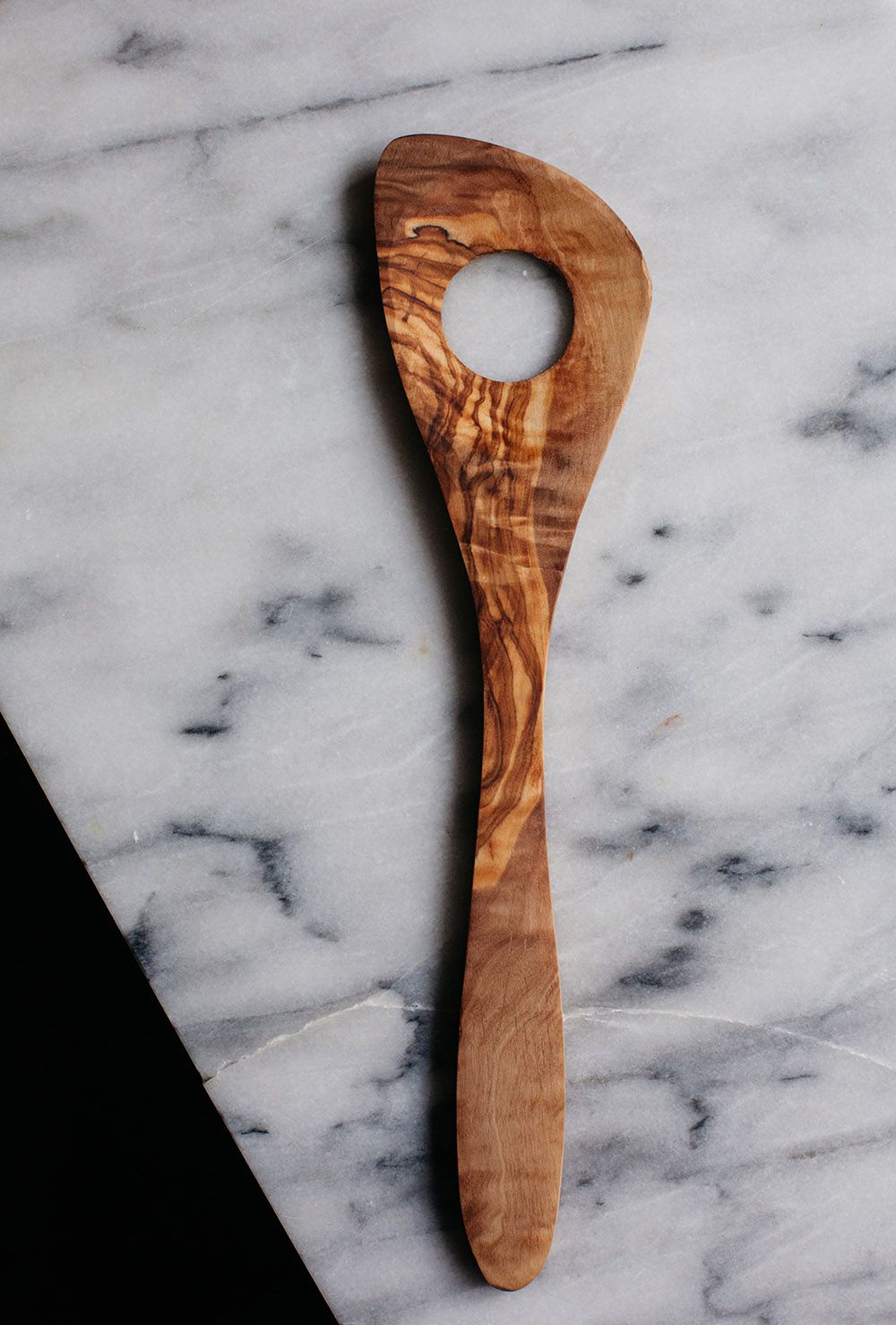
I love wooden spoons, particularly the flat-edged, rectangular ones, and I keep them in all shapes and sizes, many stained with dinners past or with scorched edges from resting on a pot too long – the older the better. My friend Valeria Necchio, a Venetian food writer, was the first person to explain to me that the wooden spoons with a hole through the middle of them are great for stirring risotto. In fact, it is sometimes called a girariso, a “rice rotator,” as the large hole allows the rice to flow freely through the spoon in the opposite direction. In other words, it doubles your stirring effort, and helps create a creamy risotto. For the same reason, it's also the recommended utensil for folding airy batters (like that of sponge cake) and for stirring pastry cream.
Chitarra
“Tradition is enduring.”
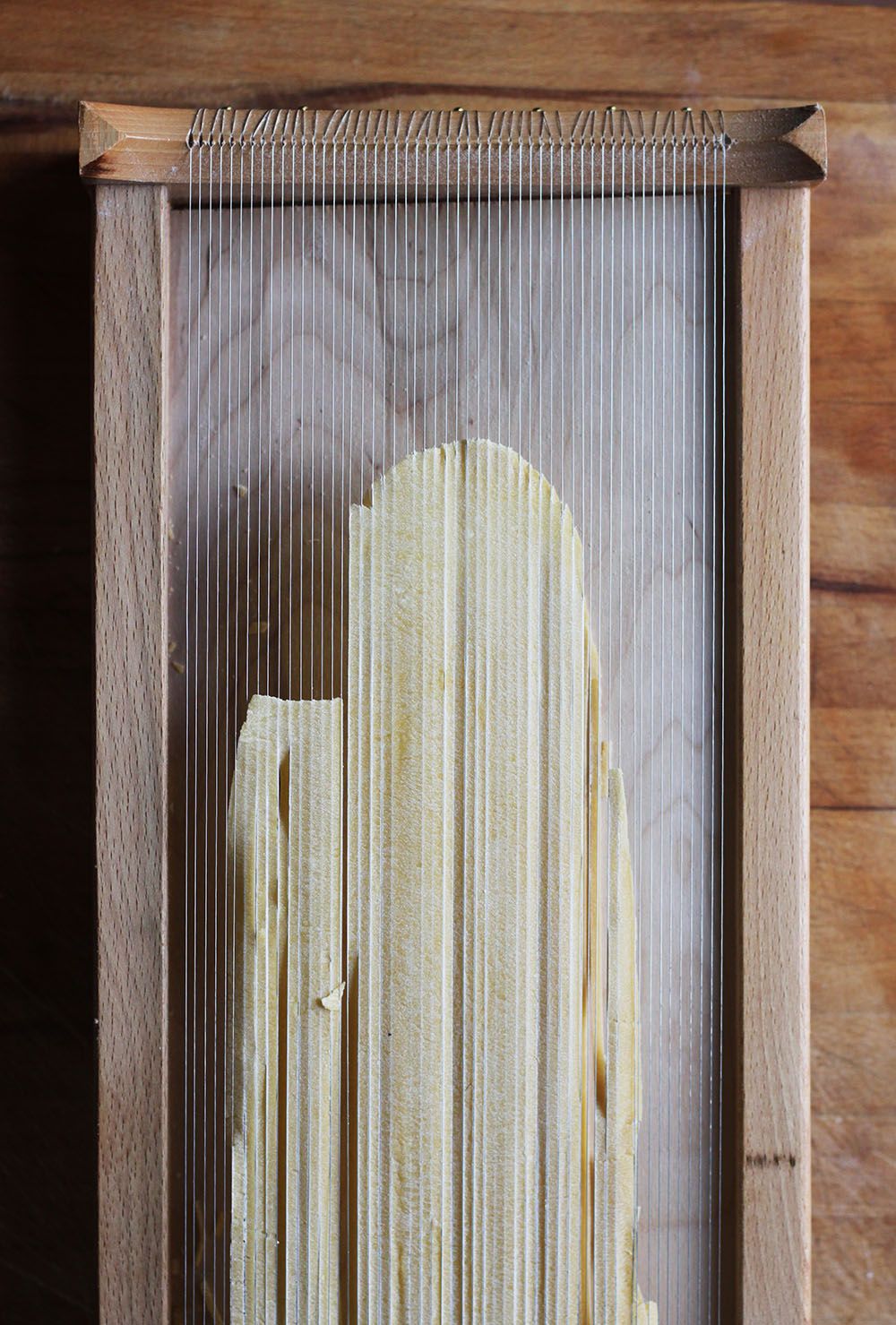
My guitar-playing husband has a soft spot for the chitarra, a rather large, wooden pasta-making instrument. It's named after a guitar for its many wire 'strings' that cut perfect, straight-edged Abruzzo-style spaghetti – often known as spaghetti alla chitarra – classically served with a hearty meat ragu. The long noodles are made from a dough of semolina and eggs that is first rolled out into a long, flat sheet, then rolled directly over the top of the chitarra frame. To remove the noodles, you 'strum' the strings like a musical instrument and they drop. They are similar to linguine or spaghetti, but with a square-shaped cross-section – like hand-cut soba noodles. In fact, I used to wonder if this pasta couldn't just be cut by hand like soba noodles, and I could save some space that the chitarra takes up in our very small kitchen. But the joy of using the chitarra like an instrument and the perfect, specific cut you get from it made me realize why these traditional tools are considered family heirlooms.
Cast-iron pan
"You can count on me."
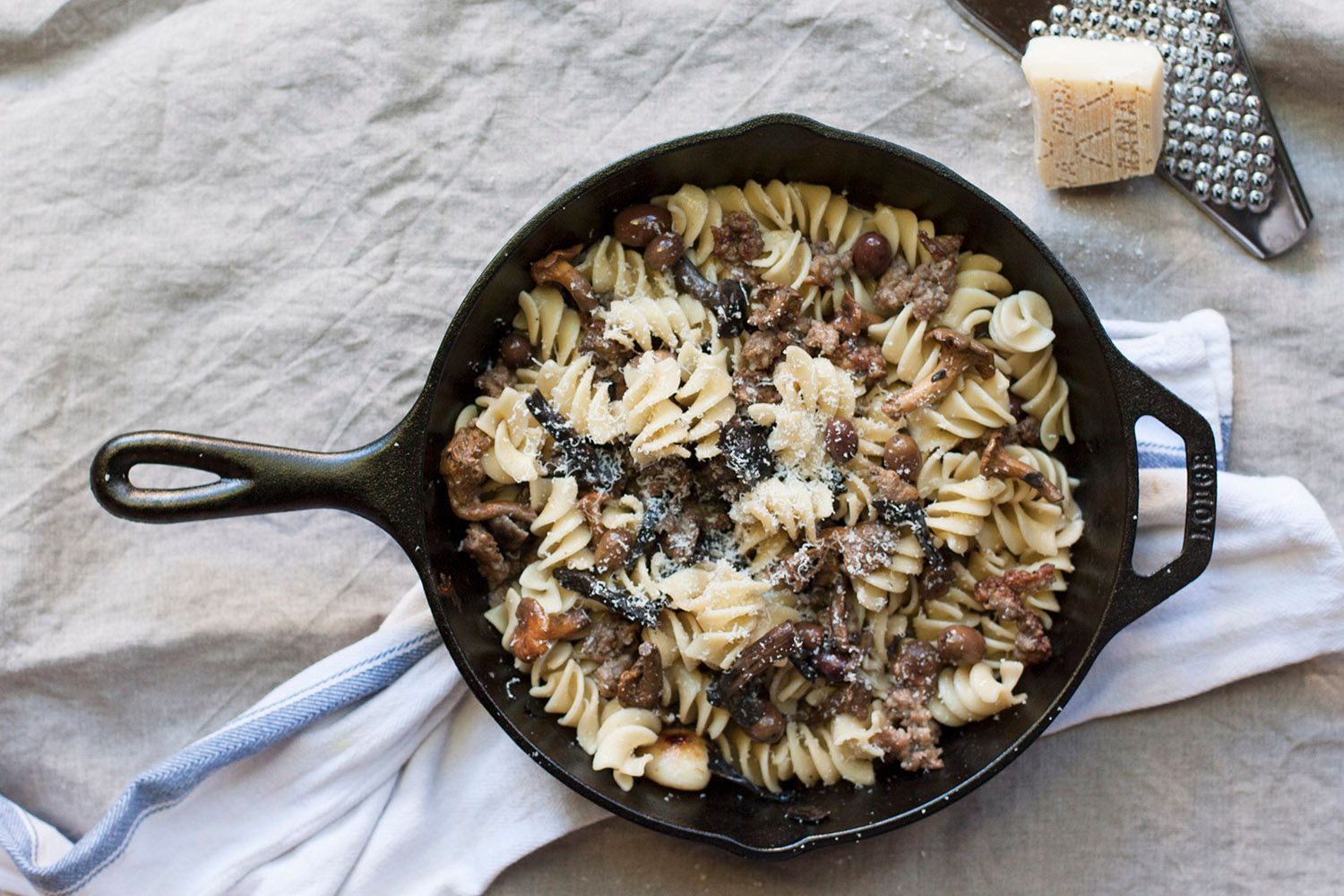
Speaking of family heirlooms, the kitchen tools I would like to pass onto my children are my cast iron pans. Having moved around my whole life, I had never invested in expensive kitchenware, or even carried around kitchen items with me, but then an Italian friend told me his most precious kitchen items were the family's heavy, old iron pans. I realized it was time and spent years searching for the right ones for our family. Now, when I feel the weight of the pan in my hand as I pick it up, I can already taste the crisp roast potatoes or the perfect fried eggs with lacy edges that I know will come out of that pan. Cooking in cast iron is not for everyone or everything, but it holds heat excellently and is versatile, so it is my go-to for frying or even for baking bread or roasting meat in the oven. Lately, my 7-year-old daughter has taken to our cast iron pan for making pancakes by herself.

